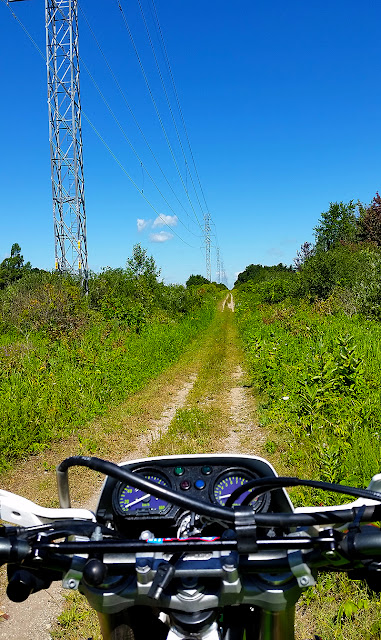 I’m wrapping up Matt Crawford’s The World Beyond Your Head, and it’s leaving a lot of questions around education.
I’m wrapping up Matt Crawford’s The World Beyond Your Head, and it’s leaving a lot of questions around education.
Throughout the book Crawford questions the hyper-individualized nature of our post-enlightenment selves. He does it in the context of skilled manual labour, which does a lot to refute the ideal ‘generic/flexible intelligence’ we all value nowadays. Skills situated in real-world demands are immune to academic flights of fantasy.
Below are some quotes I’m ruminating on:
“…manufactured experiences promise to save us from confrontations with a world that resists our will.”
Anyone teaching modern teens feels the strain of trying to haul them out of the digital trance they prefer. I teach computers and this is acute, like trying to teach pyromaniacs how to be firemen. Many of my students are incapable of seeing the machines they are supposed to be learning about as anything other than entertainment. Computers are a digital window into a world where you can always be capable and rewards are continuous and timely.
The proliferation of fairly terrible flash games on the internet indicates that many students would rather exist in digital Pavlovian response environments than deal with the pesky real world. The game play is so bad that I’m astonished anyone plays them, but play them they do, for hours at a time. Crawford has a section on machine gambling that strikes startling (and terrifying) similarities with how I see students playing these digital games (most of which are thinly veiled advertisements).
Between an isolated and hyper-intensified (almost sacred) sense of self, and the nature of digital economics, people are immersed in a society that has quantified and actively seeks their attention for monetary gain. Crawford describes this as the enlightenment ideal of a free self taken to bizarre extremes – but these extremes feed nicely into the neo-liberal/globalized digital economy we’ve created for ourselves.
Distraction is seen as a problem of technology, but it is actually one of political economy: “in a culture saturated with technologies for appropriating our attention, our interior mental lives are laid bare as a resource to be harvested by others.”
 |
| Hack the future – or be used by it. Digital technology has evolved into the shiny gateway to an attention economy that is as relentless as a casino in catching eyeballs.. |
Worries about digital-distraction have long been tied to education and technology, but Crawford does a good job of uncovering the economic foundations of that problem. My concern has always been that poor implementation of educational technology simply feeds students into this harvester.
If we’re delivering a single branded approach to educational technology, we aren’t teaching fluency so much as dependence. This is why technology multi-nationals are so willing to ‘work with education’. With students already walking into class having been digitally branded on a personal level, education has jumped on the bandwagon by following student trends (kid’s love ipads!) rather than pedagogical imperative. If we’re going to recover students’ ability to navigate (rather be navigated by) the digital economy they are immersed in, we can’t be driven by the same processes.
If the only point of education is to put more bricks in the wall, then we should just keep on doing what we’re doing. If we want to teach students to survive in a voracious economy that sees their attention as a commodity then we need to teach them what the technology is and how it works. Open source software and un-locked, non-brand specific hardware would be a good place to start, but you’re not going to see lots of ads for it.
“the advent of hyperpalatable mental stimuli… raises the question of whether the ascetic spirit required for education has a chance. The content of our education forms us, through the application of cultivated powers of concentration to studies that aren’t immediately gratifying. We therefore had to wonder whether the diversity of human possibilities was being collapsed into a mental monoculture – one that can more easily be harvested by mechanized means.”
| Student directed learning: the kind of thinking being embraced by Ontario’s education leaders at this summer’s conference. This kind of nonsense ignores how education has worked for millennia. |
The “ascetic spirit” of education is long dead. If it isn’t fun and engaging, it isn’t a correct lesson plan according to modern educational thinking. Students treat marks as a score, demanding them immediately and ignoring feed-back. There is no delayed gratification in modern education. Teachers have to justify (up front) any teaching – it can never lead toward a goal that is out of sight. Where ever possible we are asked to be as transparent and immediately gratifying as possible. The more forward-thinking, extreme view is that teachers are no longer needed at all. In an information rich world (conveniently delivered on closed platforms by multi-nationals), students can learn on their own with no direction. All you need is an I.T. guy to keep everyone connected.
If we’re producing generic-intelligence graduates that are able to work anywhere for minimum wage with no real expertise other than a can-do attitude, then we’re doing a great job. Crawford’s focus on skilled labour neatly sidesteps the ideal of the liberally educated university student who can’t do anything but is ready for everything (as long as it doesn’t involve reality). Reality makes demands on skilled trades that most academics find beneath them.
The danger in digital technology exists in its ability to latch onto and modify our very plastic thinking processes. A skilled-trades approach to understanding digital technology can elevate us from being users to being architects. Nick Carr does a good job of criticizing this in The Shallows. Crawford goes further by explaining that technology isn’t the issue, it’s the cannibalistic economics that drive it that we should be protecting students from.
By pulling back the curtain and revealing the machinery that feeds this relentless economy we enable students to dictate the terms of their digital experience. What happens instead is that we present digital technology as if it’s just another educational tool, which allows the underlying economy to seep into education unseen, feeding students into a mechanism that wants to commodify their very thoughts.

































